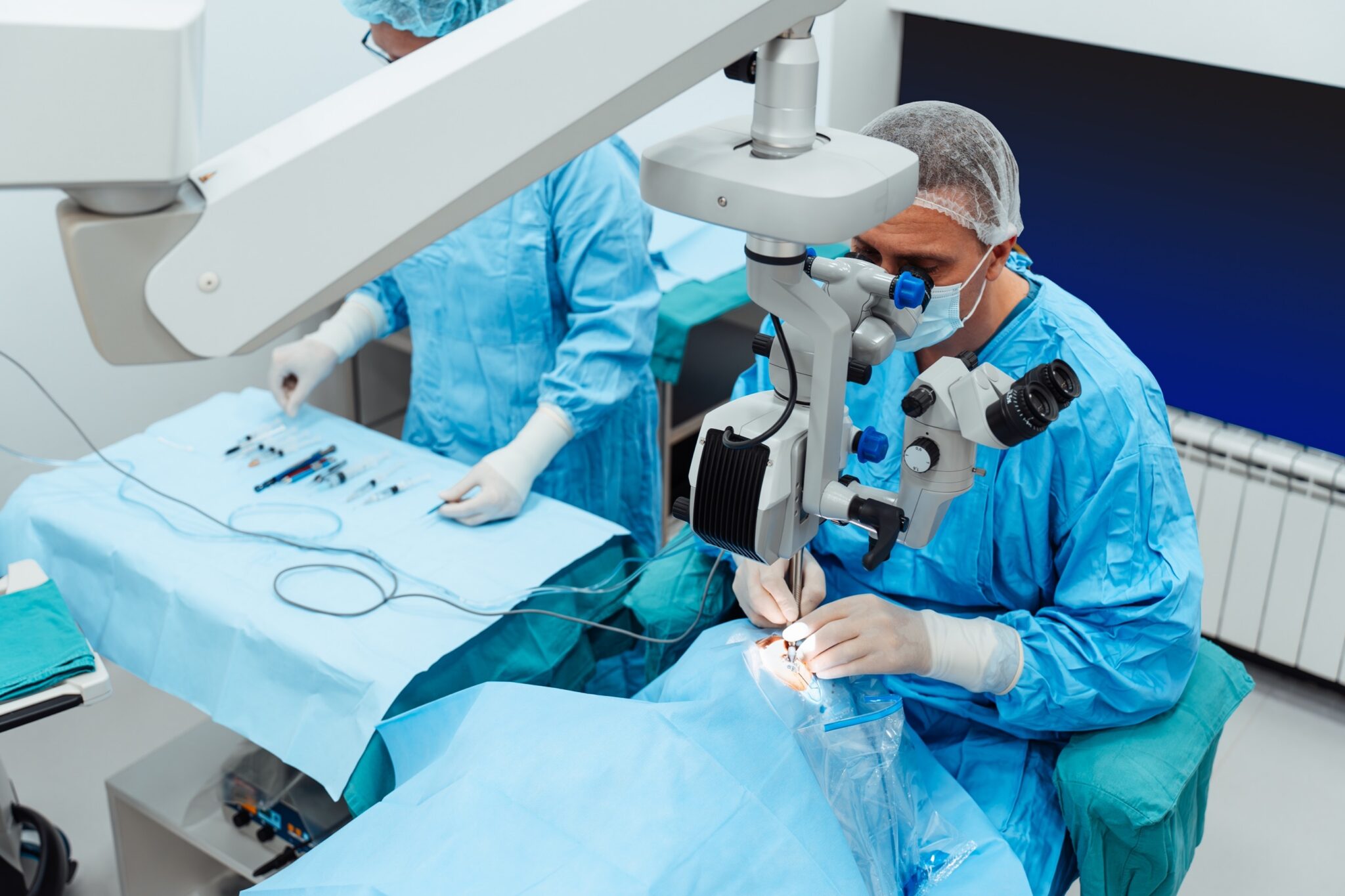Call One of Our Two Convenient Locations
Our friendly team is here to help you schedule your next eye appointment and answer any questions you may have. Give us a call—we look forward to caring for your vision!
If you've been diagnosed with cataracts and are considering surgery, understanding what lies ahead can help ease any concerns and ensure you're well-prepared for the journey.
Your journey begins with a comprehensive eye exam with your cataract surgeon. During this appointment, they’ll measure the shape and size of your eye, discuss your medical history and current medications, and determine which type of intraocular lens (IOL) might be best for you. This assessment is crucial for planning your personalized surgical approach.
Following your evaluation, you’ll receive specific pre-operative instructions. You may be asked to temporarily stop taking certain medications, particularly blood thinners. If you’re a full-time contact lens wearer, you’ll likely need to discontinue use for one to several weeks before measurements are taken, ensuring accuracy for your lens selection. Your doctor will prescribe eye drops to begin using before surgery to prevent infection and reduce inflammation.
Your surgery date will be provided during your office visit, along with all post-operative follow-up appointments. Expect a call the evening before surgery with instructions on when to report the following day. Remember that you’ll need to fast from food and drink after midnight the night before your procedure.


Cataract surgery is typically performed on an outpatient basis, meaning you won’t need to stay overnight. The procedure itself is relatively quick, usually taking about 10-30 minutes per eye.
You’ll receive local anesthesia, most of the time in the form of eye drops, to numb your eye completely. While you’ll remain awake during the procedure, you might be given a mild sedative to help you stay relaxed throughout.
During surgery, your surgeon will make a tiny incision in your eye, then use ultrasound technology to break up the cloudy lens, where the cataract is cataract, and remove it. A clear artificial lens (IOL) is then inserted through the same incision and positioned appropriately. This new lens becomes a permanent part of your eye.
During the procedure, you may see lights or blurry shapes, but you typically won’t feel any pain. Many patients report that the experience is much easier than anticipated.
Following surgery, you’ll rest in a recovery area for 30-60 minutes. You must have someone drive you home, as you won’t be able to drive yourself. Be aware that your eye may remain dilated for longer than a day, cusing temporary light sensitivity.a
Your doctor will provide prescribed eye drops, including antibiotics and anti-inflammatories, with specific instructions on when to use them. You’ll need to wear an eye shield when sleeping to protect your healing eye. During this time, avoid rubbing your eye, heavy lifting, or engaging in strenuous activities that might increase pressure in your eye.
You’ll continue using prescribed eye drops for 3-4 weeks following surgery according to a detailed schedule provided by your surgeon. Most patients notice vision improvement within a few days, though complete healing typically takes 4-6 weeks. During this time, your vision will continue to stabilize.
Your surgeon will schedule follow-up appointments to monitor your healing progress. These typically occur the day of or day after surgery, 1 week following surgery, and 3 weeks following surgery. During these visits, your doctor will check your vision and intraocular pressure. After complete healing, you may need an adjustment to your glasses prescription.

After surgery, you might experience mild discomfort, itching, or blurry vision. Light sensitivity and watery eyes are also common in the days following the procedure. Some patients notice floaters or halos around lights, particularly at night. These effects typically go away as your eye heals.
While most recoveries proceed smoothly, contact your doctor immediately if you experience severe pain, significant vision loss, flashes of light, or increasing redness or swelling in your eye. These symptoms could indicate complications that require prompt medical attention.
As your eye heals, you’ll gradually adapt to your new intraocular lens. Your vision may fluctuate slightly during the first few weeks. If you had standard IOLs implanted, you might need reading glasses for close-up tasks. If you received premium multifocal or accommodating lenses, you’ll adjust to the new visual experience over time.